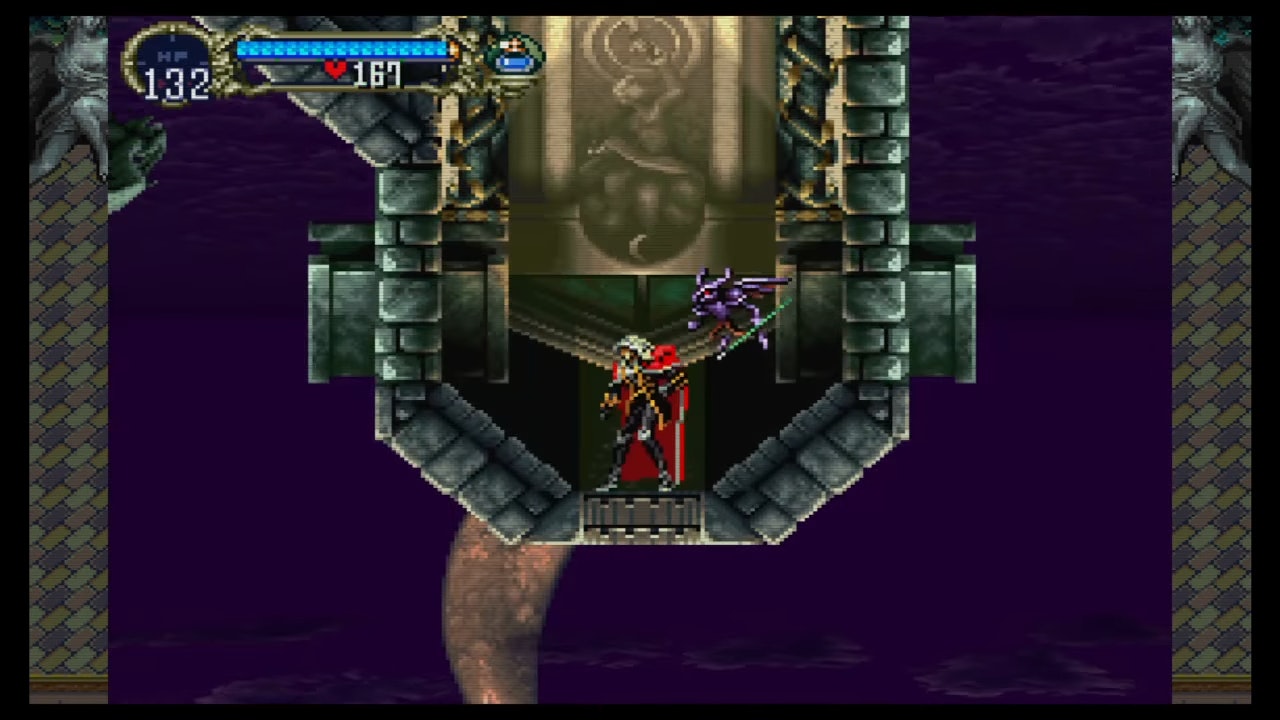
Modern 2D action games owe a lot to the likes Castlevania: Symphony of the Night, a game that popularized the “Metroidvania” genre we know and love today. Sure, there had been plenty of great Castlevania and Metroid games prior, but Symphony of the Night was the culmination of over a decade of intriguing design decisions—amounting to one of the best games ever made.
Released on March 20, 1997, Symphony of the Night turns 25 this Sunday, and while it makes sense to rattle off all the things this Castlevania game does right, there’s one mechanic, in particular, that steals the show, and is arguably underappreciated to this day.
Into the upside down

Several hours into Castlevania: Symphony of the Night, you reach a point when you must face Richter, a vampire hunter being controlled by a dark priest named Shaft. However, special holy glasses allow you to instead see Shaft and defeat him, unlocking a secret section of the game.
If you don’t have the glasses, you’ll fight Richter, win, and the credits will roll. You might feel a little disappointed. Surely, that can’t be all there is, right?
Defeating Shaft leads to one of the most mind-bending sections of a video game ever made. The entire castle you’ve spent several hours exploring flips upside down, forming the famous Inverted Castle that Symphony of the Night is known for. That’s right, it’s the same castle from before, but now that it’s quite literally flipped on its head, unlocking new routes, enemies, and features that expand upon what you’ve already experienced.
The castle feels impressive enough on a regular playthrough. It’s packed full of secrets, branching paths, and varied areas that make it feel like a lived-in space. But the fact that the entire map was also designed to work upside down is a testament to the meticulous planning and design that went into Symphony of the Night.
The sheer genius of this experience truly sinks in when you replay the right-side-up version of the castle after knowing this twist. You’ll start to look at certain platforming sections in a new way. Specific areas such as the main hallway you walk through after first entering the castle (designed specifically for early in the game before you’ve unlocked a double-jump) seem so much more intentionally crafted.
Floors are ceilings and platforms that used to be high off the ground are now easily accessible. Areas that were impossible to reach are now at your fingertips. “Oh, that’s how I’m supposed to get there.”
Playing through the inverted version evokes a sense of triumphant victory. Certain platforming sections that might’ve given you trouble at first are now a cakewalk when reversed. It’s almost like you’re getting revenge on a particularly tricky level.
Making do with the resources at hand

Aside from how impressive the Inverted Castle is from a gameplay perspective, it’s also brilliant on the developmental end. In 1997, games were much smaller in scale. Developers had to get creative with resources and budget, allowing players to enjoy a full experience without taking a decade and hundreds of millions of dollars to make a game.
That’s why so many games from the late ‘90s are so difficult. Developers would insert brutal enemies to make players spend more time with each game. It was a way to artificially inflate the playtime and make gamers feel like they were getting their money’s worth.
These days, that’s not as prominent unless you’re playing an intentionally difficult game like Elden Ring, but in 1997, this design philosophy ran rampant. That’s why it was so impressive to see Konami give players a hefty package that never felt superficially difficult.

Even in 2022, reusing a level in this way isn’t common — mostly because it’s hard to execute properly. Sure, there are games that make you backtrack, but these segments often feel repetitious and designed to artificially inflate your playtime. Even the recent beloved Metroid Dread requires you to backtrack, revisiting the area Cataris after acquiring Samus’ Wide Beam powerup. It's not a bad design choice, but it does say a lot about how Konami was able to give you more without making Symphony of the Night feel repetitive.
Symphony of the Night’s inverted castle works on all fronts, simultaneously feeling new and fresh while also rewarding to explore. Forced by necessity to make the most out of limited time, space, and money, Konami created something truly amazing. Sometimes, necessity really is the mother of invention.
Working with a medium-sized map also likely gave the studio a chance to pour more love into every nook and cranny, rather than creating a large, empty experience. That’s why even 25 years later, Castlevania: Symphony of the Night still stands the test of time, due in large part to its beautifully designed castle —both right side up, and upside down.
You can play Castlevania: Symphony of the Night on a variety of platforms, but the most practical way is the Castlevania Requiem: Symphony of the Night & Rondo of Blood for PS4. This collection doesn’t do much to celebrate the beloved game, but it’s the easiest and most affordable way to access it.







